Whether you are an aviation enthusiast or not, the Queensland Air Museum is sure to be an experience to interest everyone.
The collection of aircraft is impressive with a combination of enclosed display areas, covered displays, and open air displays. Most of the really large aircraft are understandably in the open air, except for the F-111 (which isn’t the largest on display).
There are near 100 aircraft in the collection, some are undergoing restoration or in storage. The F-111C A8-129 is star in the collection, stored in an enclosed building. Announced in the early 1960s, Australia had its first delivery nearly 10 years later in April 1973.
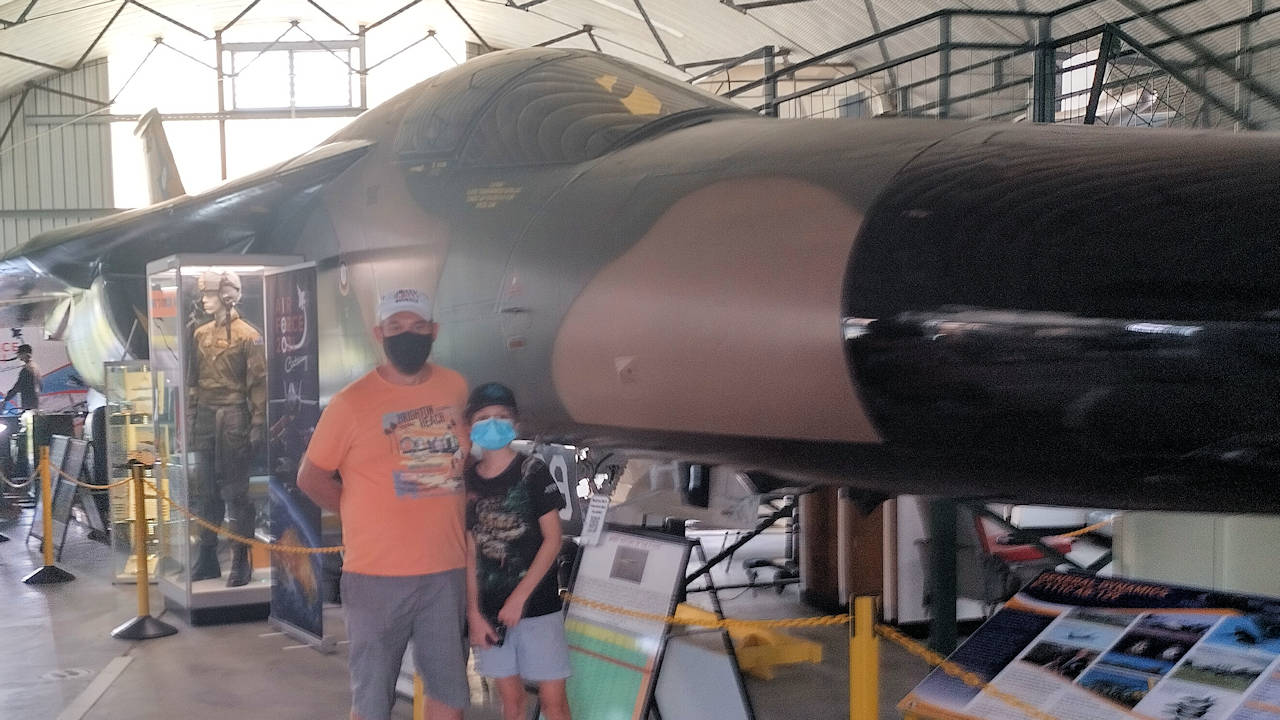
Many will remember the F-111 for its dump-and-burn. First performed for the Sydney Olympics, it became a spectacular and popular display of flames at air shows, Brisbane’s Riverfire, and the Australian Grand Prix. The display was possible because the F-111 can dump its fuel immediately after the engines and ignite it with its afterburner.
The F-111 continued service until December 2010 and the dump-and-burn displays ceased with it. Seven of the aircraft were made available for loan to museums, The Queensland Air Museum being one of them. They remain the property of the Royal Australian Air Force.
Military vehicles often inspire interest and curiosity. There are several military aircraft over generations of air defence.
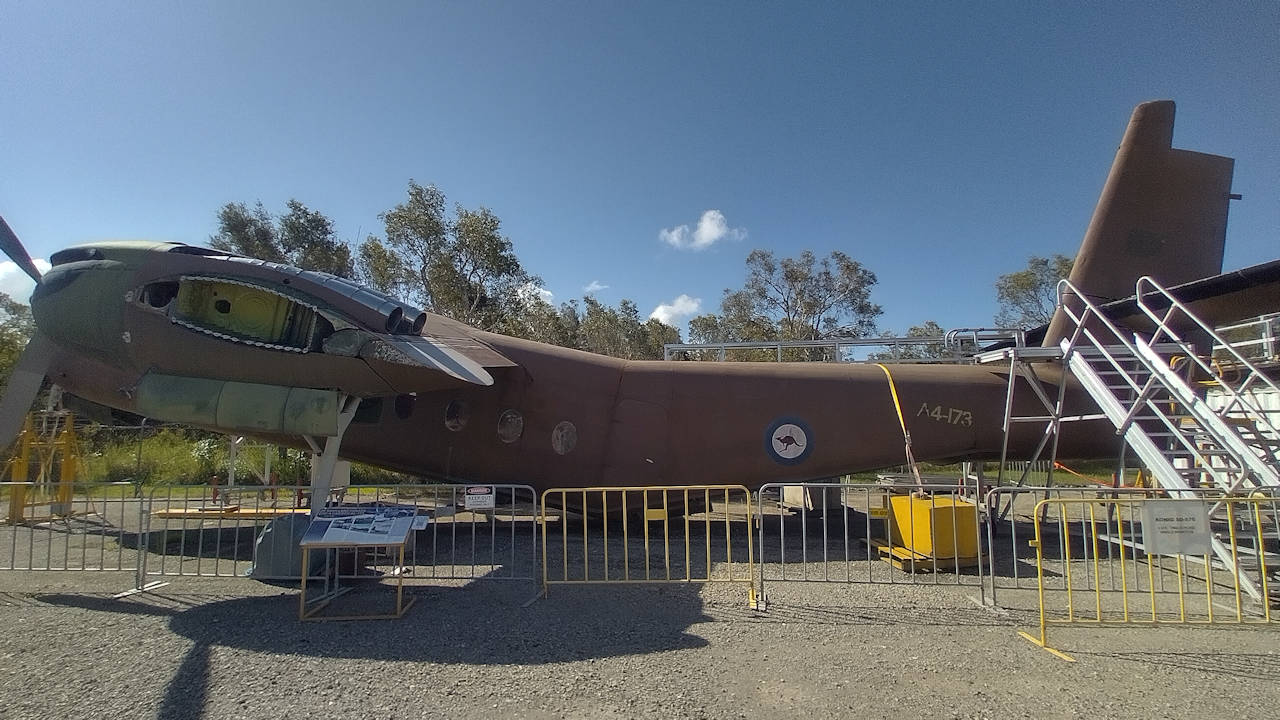
The twin exhausts over the top of the wing initially catching my eye, the Caribou A4-173 was meant to be displayed at the Australian War Memorial. An example of extensive restoration by Queensland Air Museum, this aircraft has escaped destruction a few times. It survived not one, but two crashes during eight years in Vietnam.
Rebuilt both times, it went on to serve in the Royal Australian Air Force for another 20 years. Stripped to its bare basics, it was almost lost entirely until restoration began. Internal restoration continues with the airframe almost back to complete again.
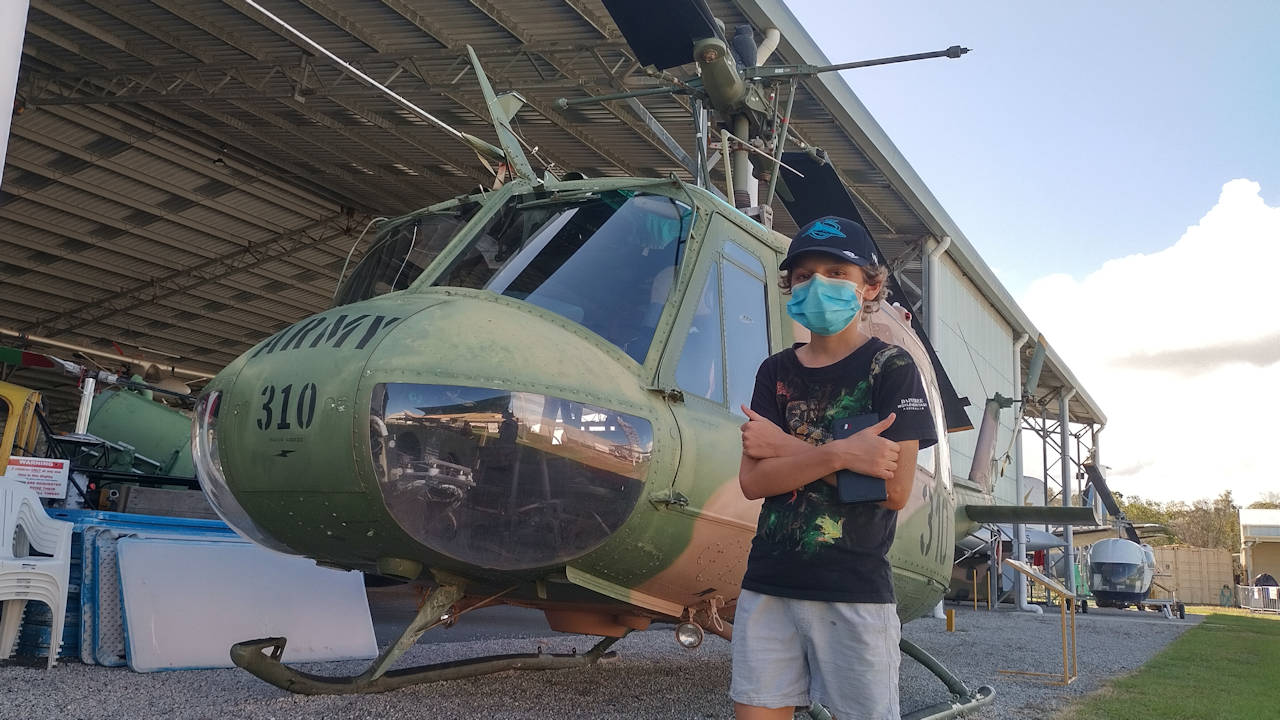
If there is a more recognisable aircraft from the Vietnam war, there couldn’t be any more so than the Bell Model 205. The 205 UH-1H Iroquois A2-310 is a stretched version of the earlier UH-1D, installed with a more powerful engine.
The UH-1 helicopters earned the nickname ‘Huey’. Before the UH-1 designation, the first version’s designation was HU-1, looking more like the sound of Huey. When the designation changed, the Huey nickname stayed.
Starting service in the 1960s, Australia used the UH-1H helicopters until 2007. The last where operated at the Army Aviation Centre in Oakey Queensland, where another example can be found in the Army Flying Museum ![]() . Another can be found in the War Museum at the Gold Coast
. Another can be found in the War Museum at the Gold Coast ![]() .
.
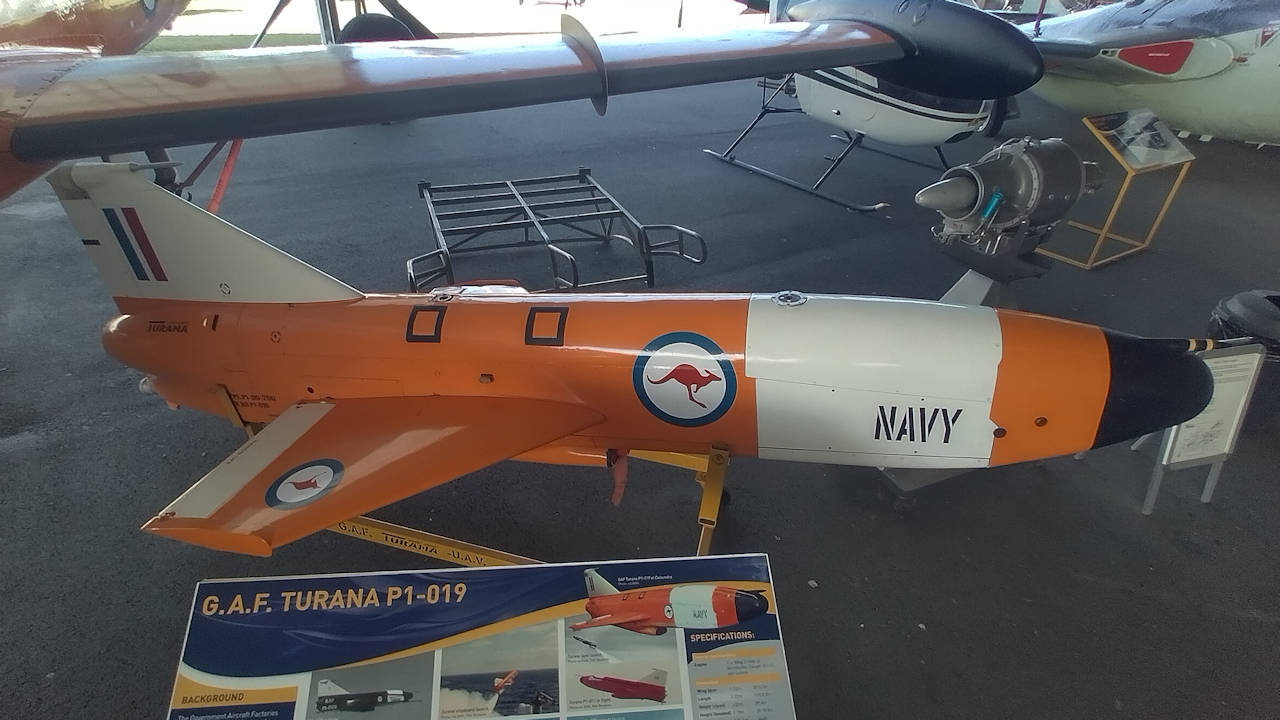
I think of drones as a more modern air defense aircraft. The GAF Turana P1-019 changed my misconception, an Australian built target drone as a development of the Ikara anti-submarine weapon system. It is believed Turana is an aboriginal word meaning rainbow.
The Turana is a metal and fibreglass drone powered by a microturbo engine. Not only was this drone first flown in 1971, it replaced propeller-driven radio-controlled Northrop Shelduck drones from the 1940s for antiaircraft gunnery training.
The launcher of the Ikara weapon system, propelled the Turana into the air. The Cougar jet engine then powered the drone for normal flight, eventually landing in the water for recovery. The engine was designed to last for 10 flights, even after being submerged in water waiting for recovery. Water ingress caused failure of the electronics, eventually cancelling the program in 1979.
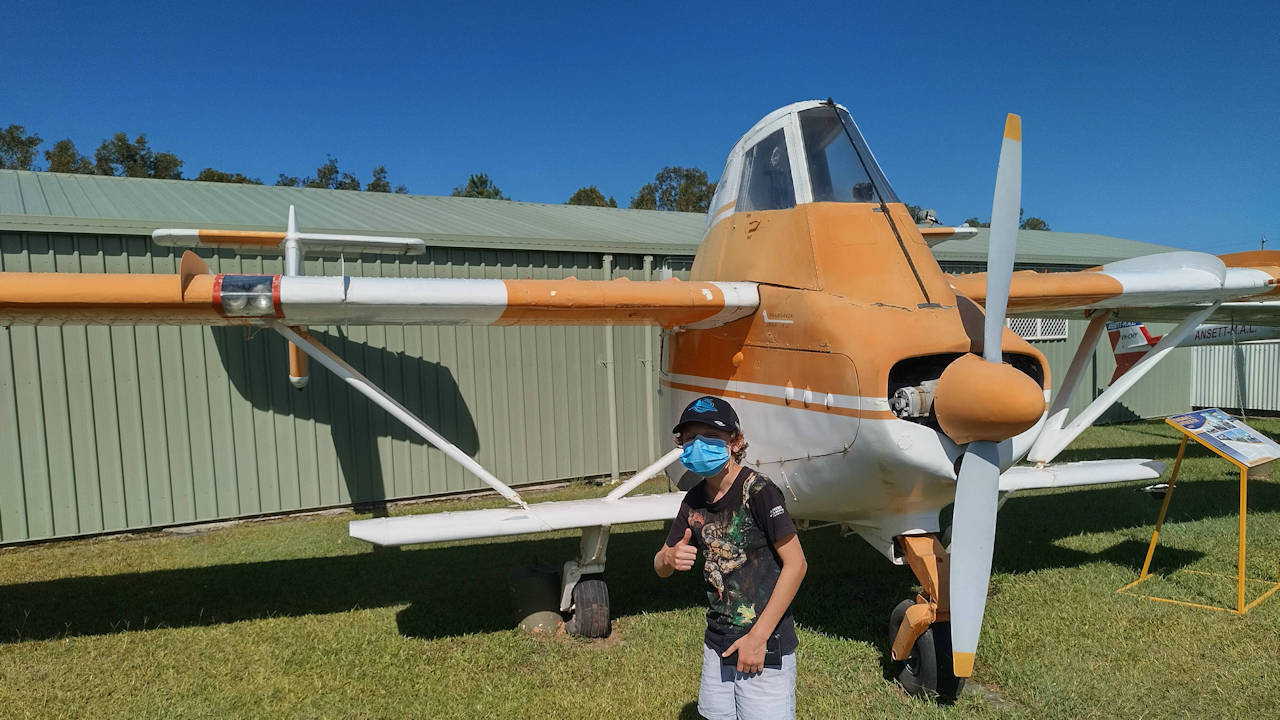
The collection of aircraft at Queensland Air Museum isn’t limited to military aircraft. The Transavia PL-12 Airtruk ZK-CWX is an example, an Australian designed agricultural aircraft. It has two unconnected tail booms coming off the top wings. The lack of a main tail from the fuselage adds to its stubby looking design. It is also an example of a sesquiplane, a type of biplane with one of its wings much smaller than the other.
The Transavia PL-12 may look familiar if you watched Max Mad: Beyond Thunderdome. “The Flying Jalopy” is in the opening scene ![]() , with the pilot dropping on Max’s cart from the plane to steal it, his son continuing to fly the PL-12. It is also at the end of the movie when Mad Max helps the Little Ones to escape on the plane
, with the pilot dropping on Max’s cart from the plane to steal it, his son continuing to fly the PL-12. It is also at the end of the movie when Mad Max helps the Little Ones to escape on the plane ![]() .
.
We arrived late in the afternoon so only had an hour to look around. It was barely enough time for a quick look and ideally we would have come back the following day. Allow at least two hours to take your time looking at everything, more if you are an avid aviation buff or like to look at everything carefully and read all of the information at the displays. One hour was definitely too rushed.



